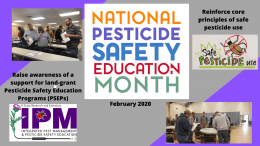
Many of you are busy “pushing snow” with the recent cold weather, and there will likely be more snow to push in the next couple of months. Please take a few minutes to train your staff on protecting ornamental plants when clearing hard surfaces like parking lots.
While clearing the lot, driveway, or sidewalk is the most critical objective, “do no harm” should also be a goal. Far too many plants are crushed by the push and weight of snow in winter months. Sometimes, the mystery summer problem is actually a clear winter problem.
There is a tendency to pile snow on top of green spaces in parking lots. However, plants in those spaces continue to need to photosynthesize (evergreens) and exchange gases and are likely to die or suffer severe dieback if the cold weather persists and the snow takes a significant time to melt. Piling snow in planting areas can also contribute to soil compaction and root decline, causing problems later in the growing season.
De-icing chemicals are often mixed into snow that is pushed into landscape settings. As the snow melts, it dumps salt into the planting area, damaging shoots and roots for the long term. To minimize the landscape impacts of clearing snow, consider alternative de-icing salts like calcium chloride and calcium magnesium acetate and follow the label instructions when possible. Sand can also help provide traction.
With your staff, practice identifying an appropriate place to pile snow that isn’t in landscape areas, offers a place to collect runoff, and won’t result in slush that can splash onto plants. When possible, make these decisions before snow is on the ground—snow can cover a lot of detail and make it easy to lose track of the areas that need to be preserved.
Study each site individually and develop a plan for human, pet, and plant safety when winter storms hit to avoid problems in the future and establish trust with your clients.

